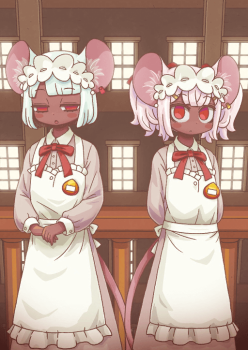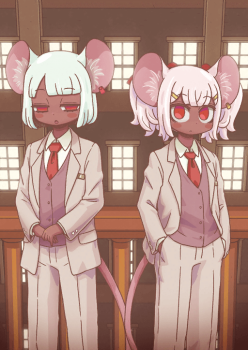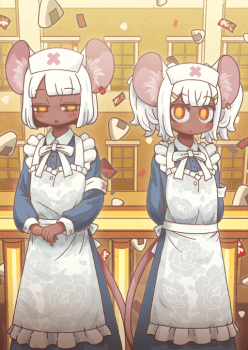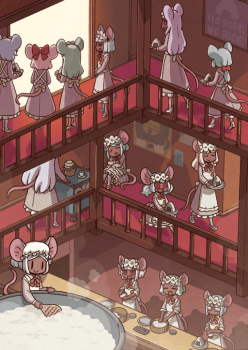So I’ve already touched on what Daikokuten wants from a team earlier: with two Skadis, they refund 50% off their NP against three targets, which means they can loop farm sub-90+ nodes. You may have noticed, though, that I said the mice want Reines rather than Oberon or Castoria. It’s a bit more situational than that in practice, but the reasoning comes down to skill ordering and turn 2 damage. In order to get at why this is, let’s assume Daikokuten does not get an NP charge CE (due to running BG or an event CE) and start by breaking down how Daikokuten works with Reines versus with Oberon.
For the Reines team, you use Skadi/Daikokuten/Reines/Skadi. On turn 1, Daikokuten gets 50% charge from Mana Loading and their own battery, and 50% from Reines. Skadi batteries secure the loop on the next two turns. This means Daikokuten has Reines’s 40% attack buff on turns 1 and 2. For the Oberon team, you use Skadi/Daikokuten/Skadi/Oberon. Oberon cannot provide 50% charge prior to turn 3 without interfering with a later turn’s NP gain, so on turn 1 we use the first Skadi’s battery to supplement Daikokuten’s charge. On turn 2 we use the second Skadi battery, and on turn 3 we use both Skadis’ defense debuffs and plug in Oberon to secure the final loop and push damage with End of the Dream—substantially, if Black Grail is involved. While Oberon has the stronger turn 3, Reines provides more damage on turns 1 and 2.
There are caveats to this, of course. Oberon providing an extra 20% charge means you can use him to cover a wave of 2 enemies instead of 3. For 3/3/x nodes, you can also plug him in early and use his NP damage buff just for the damage, since you don’t actually need its charge. This prevents you from using a Skadi defense debuff on turn 3, but if turn 2 damage is the issue anyway, that’s not necessarily a problem (especially if you’re running BG and can rely on End of the Dream for explosive turn 3 output).
Broadly speaking, it’s most accurate to say that whether Oberon or Reines is better in this case will depend on the node you’re farming. Reines is simpler and more consistent, though, so I would generally favor her unless I knew specifically Oberon’s mix of tools was better for the way a node was structured.
Note that, for the sake of the above setups, anything that uses Reines can use Waver or Castoria instead, but Reines brings more damage than they do. Since Daikokuten is so damage-starved, you really want to bring Reines over the other two for the extra attack if you can.
Once you get past farming, bursting things down with Daikokuten starts to become more and more of a losing battle. CQ damage thresholds tend to be higher than farming thresholds, and unlike in farming, you very rarely have situations in AoE CQs where you can count on having class advantage against everything you’re fighting.
As such, if you want to use Daikokuten for hard fights, you’ll have better luck leaning into defensive play—which, fortunately, they’re well-positioned to do. The basic Quick stall shell is Skadi/DPS/Castoria, and Daikokuten is one of the better damage-dealers for this strategy. The basic idea for these teams is that you want a Skadi->DPS->Castoria NP chain every three turns, in order to get three hits of solemn defense and one hit of dodge, avoiding taking damage while slowly whittling the enemy down. This is both slower and less safe than comparable Arts and Buster setups (for a variety of reasons not directly relevant to Daikokuten), which means this can be difficult to do without healing to offset the inevitable damage and bonus NP charge to mitigate the risk of bad card draws.
Fortunately, Daikokuten brings both of these things. Daikokuten’s passive heal can let the team gradually recover from an unlucky turn, and Daikokuten’s NP gain buff and passive NP charge make it easier to set up consistent NP chains. Alternatively, you can pass on the NP gain buff and save Daikokuten’s third skill for emergencies, letting it give you a free hit of dodge if you aren’t able to rebuild NPs in time. Due to Daikokuten’s low damage, this team will take a while to clear things, but it should be pretty stable, making Daikokuten a good option if you have to slowplay and can’t or don’t want to use Arts or Buster teams to do it.
It’s also worth noting that all three of Daikokuten’s skills, as well as their NP, have supportive components. From an offensive standpoint, they provide less damage push than you’d expect from a budget support—and they’re very much more DPS-oriented than support-oriented—but with all the utility they have, they aren’t the worst Quick semi-support you can bring. They do a lot of the same things Hans does—star gen, some damage push, some crit buffs, some defensive utility, passive NP gain, etc—while also dealing reasonable damage. If you’re really hurting for supports, or if you just want to run something unique, you can pair Daikokuten with other Quicks with semi-supportive kits (like Laksmibai, Barti, and Rider Carmilla) and let their kits prop one another up for consistent damage output regardless of who’s attacking. This sort of team is far from optimal, but it should be functional enough for low-to-mid-difficulty story fights and the like.
If you aren’t running an event CE, Daikokuten really wants the Black Grail. They need all the damage they can get, and nothing gets you more damage than Black Grail—especially considering Daikokuten has in-kit healing and enough NP gain to not really want another CE. That said, it’s also worth noting that (if you don’t need damage for some reason) Daikokuten can loop 3/3/x nodes plugless with just a 50% charge CE. If you’re going that route, I’d recommend Golden Sumo if you have it. Daikokuten’s lack of in-kit attack buffs means they’ll benefit fully from what it offers.
Daikokuten doesn’t have any particularly obvious Command Code synergies. A crit damage CC on their Buster isn’t a bad idea for a little extra damage, and you might consider healing or buff-removal CCs on their other cards to increase their stability and utility in hard fights, but aside from that, there’s not really anything they need that CCs can solve.
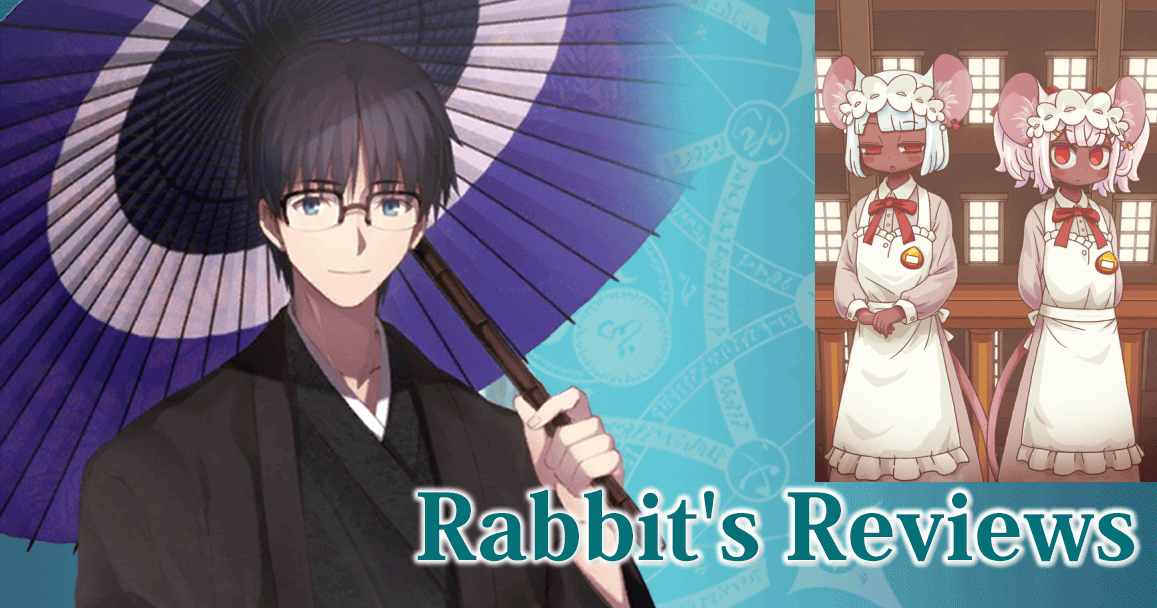
 5
5 3
3 3
3 5
5 9
9




